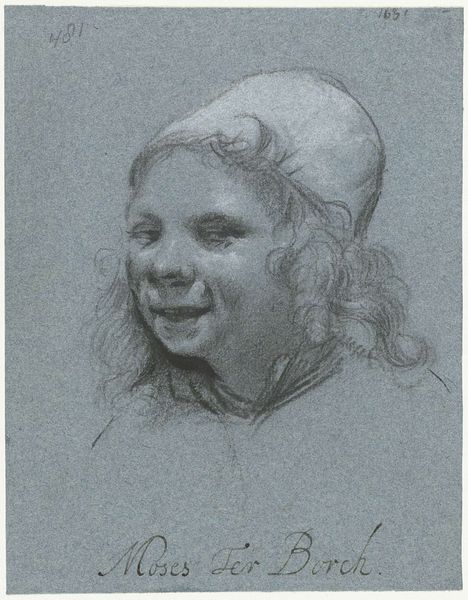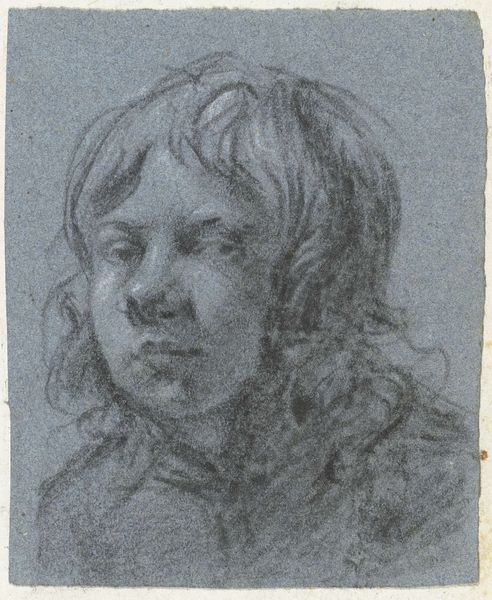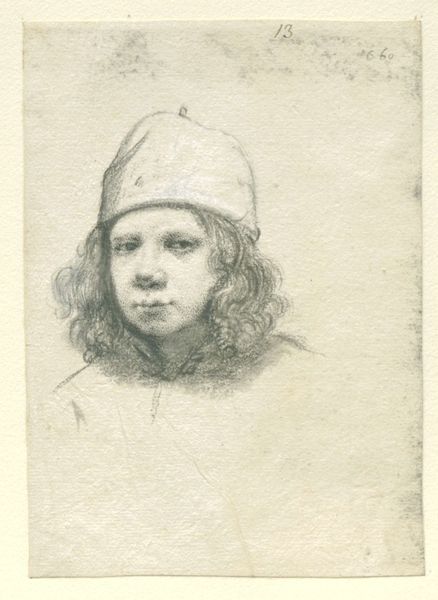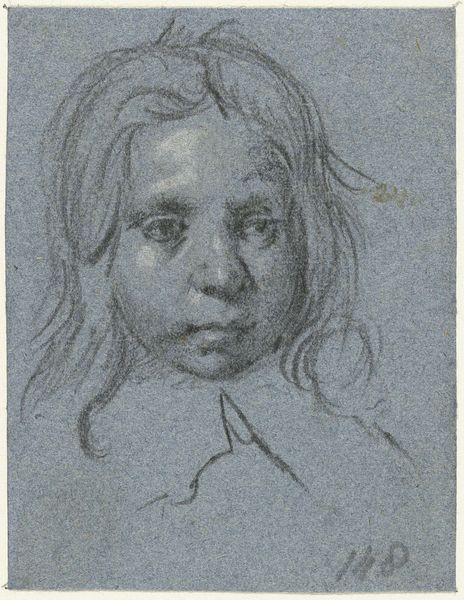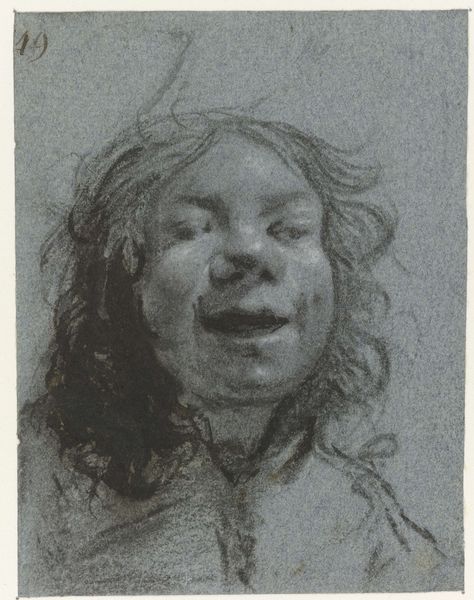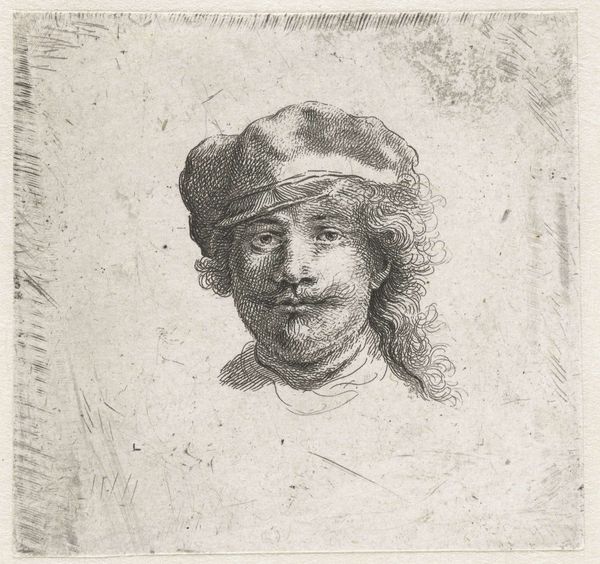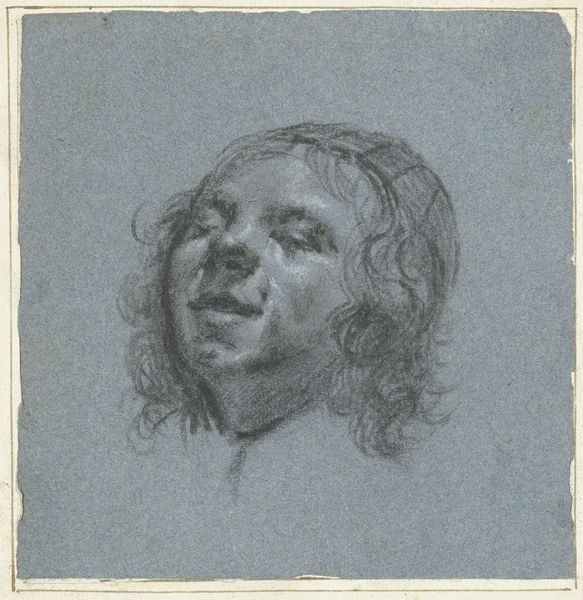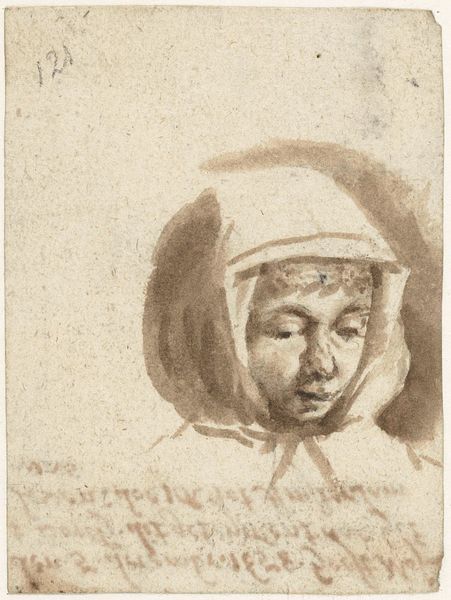
drawing, pencil
#
portrait
#
pencil drawn
#
drawing
#
dutch-golden-age
#
pencil sketch
#
pencil drawing
#
pencil
#
portrait drawing
Dimensions: height 144 mm, width 112 mm
Copyright: Rijks Museum: Open Domain
This is a self-portrait in black chalk by Moses ter Borch, a Dutch artist, held at the Rijksmuseum. Note the artist’s distinctive headwear. The turban or cap, while a simple piece of fabric, carries a rich history and is a potent symbol. Throughout the Renaissance and Baroque periods, the turban appears in various guises, often denoting exoticism or association with the East. Think of paintings depicting biblical figures or wealthy merchants adorned in similar headgear. It’s a visual shorthand that links the wearer to far-off lands, to wisdom, or even to a certain degree of otherness. The adoption of such attire by Ter Borch in a self-portrait tells us of the evolving meaning of this symbol. The artist is consciously engaging with a visual language that evokes a sense of self-awareness, theatricality, and an awareness of art's enduring symbols. The meaning of this image has changed over time, but the subconscious appeal is still the same. It represents cultural memory and a deep, inherent link with our past.
Comments
No comments
Be the first to comment and join the conversation on the ultimate creative platform.

